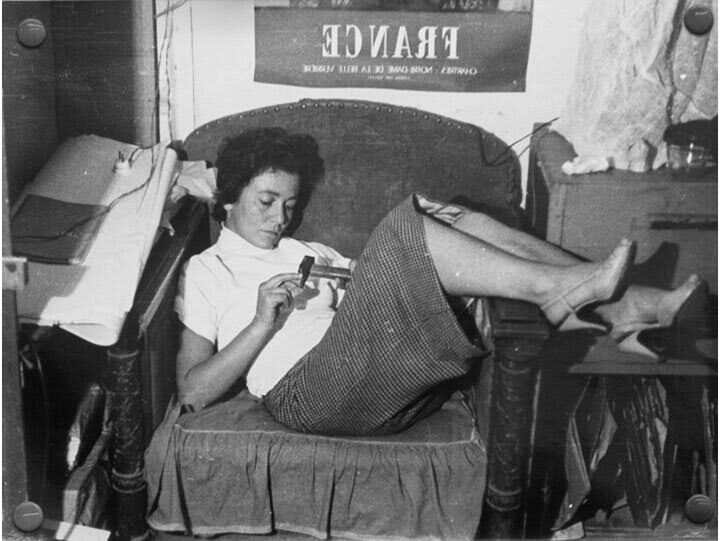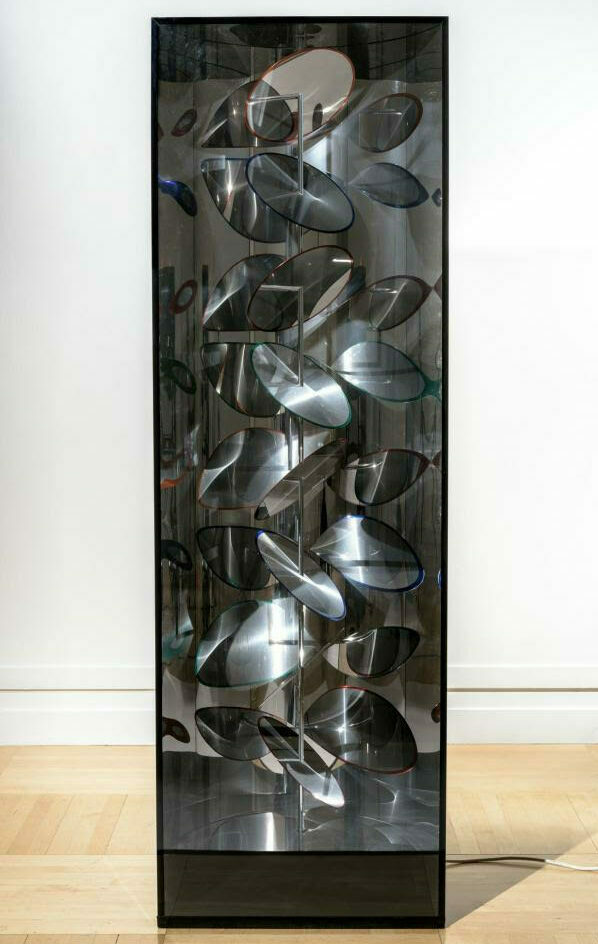Martha Boto
Born in 1925 in Buenos Aires, Martha Boto is an important kinetic artist. An early interest for theater, art and music lead her to graduate, in 1950, at the renowned Higher School of Fine Arts, where she earned the prestigious Ernesto de la Carcova scholarship and was attributed two painting prices. At that stage and before evolving towards geometrical abstraction, her paintings were mainly landscapes and scenes of everyday life. Between 1951 and 1960 alone, she was dedicated eight solo exhibitions. And through her new interest for the concrete art movement and the Arte Nuevo Association, she encountered Grégorio Vardagena, who would become her lifelong companion. In 1957, she then joined the A.N.F.A. group. (Argentine Non-Figurative Artists) and participated in numerous concrete art events. During this period she expressed her first concerns about space and developed her first plexiglass mobiles in random movement. In 1958 she traveled to Paris, where she would settle with Grégorio Vardanega in 1959. In the early sixties, she joined the Denise René gallery. From 1963 she used electricity in her work and created her first kinetic works. She collaborated with the international Nouvelle Tendance movement from 1963, and participated in the most decisive meetings of this group, which objective was the recognition of kineticism. In 1964, she is dedicated a solo exhibition at the Maison des Beaux-Arts in Paris. Her famous lumino-kinetic boxes were created during this period and presented at the exhibition Light and Movement at the Musée d’art moderne de la ville de Paris, in 1967. The following year, she mainly produced mobiles with colored Plexiglas discs. In 1969, the Denise René gallery organized a major retrospective which retraced her career as a kinetic artist. At the beginning of the seventies, Boto created her last kinetic structures devoid of light, inspired by the movement of the stars. From 1972 on, she gradually returned to painting, exploring undulatory rhythms, graphics and more traditional sculptural forms. She died in 2004 in Paris.
Martha Boto’s work is part of important collections, including the Albright-Knox Art Gallery, Buffalo, New York, USA; Los Angeles County Museum of Art (LACMA), California, USA; Musée d’Art Moderne de la Ville de Paris, France; Musée National d’Art Moderne – Centre Pompidou, Paris, France; Museo de Arte Latino americano de Buenos Aires (MALBA), Argentina; Museo Nacional de Bellas Artes, Buenos Aires, Argentina; Museu de Arte Moderna do Rio de Janeiro (MAM Rio), Brazil; The Museum of Fine Arts, Houston (MFAH), Texas, USA; Muzeon Tel Aviv Leomanut, Israel; and the Peggy Guggenheim Collection, Venice, Italy.

